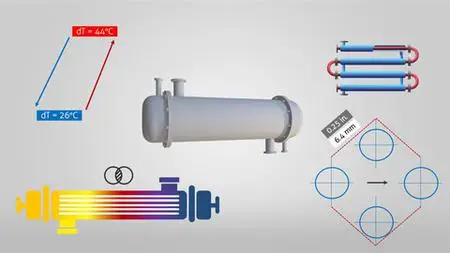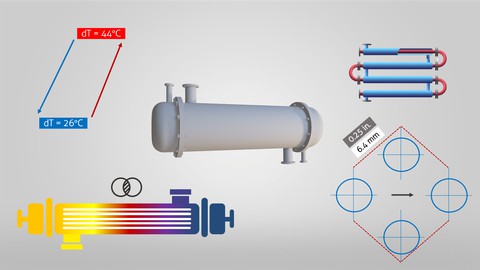Heat Exchangers: Principles, Operation And Design
Last updated 12/2021
MP4 | Video: h264, 1280x720 | Audio: AAC, 44.1 KHz
Language: English | Size: 326.52 MB | Duration: 0h 52m
Last updated 12/2021
MP4 | Video: h264, 1280x720 | Audio: AAC, 44.1 KHz
Language: English | Size: 326.52 MB | Duration: 0h 52m
Learn about Heat Exchanger Design, Construction and Working principle
What you'll learn
The Fundamental Elements and Types of Heat Exchangers
Shell & Tube Heat Exchangers
Basic Heat Balance around Heat Exchangers
Shell & Tube Heat Exchanger Design
Requirements
There is no strict requirement for this course
Description
Heat Exchangers Training Course provided by Velocis Solutions aims to deliver the fundamental theory of Heat Exchanger and its design principles. Here in this course, you will get into the most practical knowledge of design principles about Heat Exchangers by going over the following topics:Heat Transfer Fundamentals;Heat Exchanger Types;Shell & Tube Heat Exchangers;Basic Heat Balance around Heat Exchanger;Shell & Tube Heat Exchanger DesignWould you like to have an introductory information about heat exchangers before enrolling the course? If so, here is some information for your interest:A heat exchanger is a system used to transfer heat between two or more fluids. Heat exchangers are used in both cooling and heating processes. The fluids may be separated by a solid wall to prevent mixing or they may be in direct contact. They are widely used in space heating, refrigeration, air conditioning, power stations, chemical plants, petrochemical plants, petroleum refineries, natural-gas processing, and sewage treatment. The classic example of a heat exchanger is found in an internal combustion engine in which a circulating fluid known as engine coolant flows through radiator coils and air flows past the coils, which cools the coolant and heats the incoming air. Another example is the heat sink, which is a passive heat exchanger that transfers the heat generated by an electronic or a mechanical device to a fluid medium, often air or a liquid coolant.
Overview
Section 1: Heat Exchangers: Principles, Operation and Design
Lecture 1 Heat Transfer Mechanisms: Conduction
Lecture 2 Heat Transfer Mechanisms: Convection
Lecture 3 Heat Transfer Mechanisms: Radiation
Lecture 4 Multiple Heat Transfer Mechanisms
Lecture 5 Heat Exchanger Types
Lecture 6 Shell & Tube Heat Exchangers
Lecture 7 Common Applications of Shell & Tube Heat Exchangers
Lecture 8 Shell & Tube Heat Exchanger Internals
Lecture 9 Basic Heat Balance around Heat Exchangers
Lecture 10 Shell & Tube Heat Exchanger Design
Lecture 11 Effect of Fouling and Velocity
Chemical Engineers,Process Engineers,Junior Engineers,Design Engineers,Engineering Students



